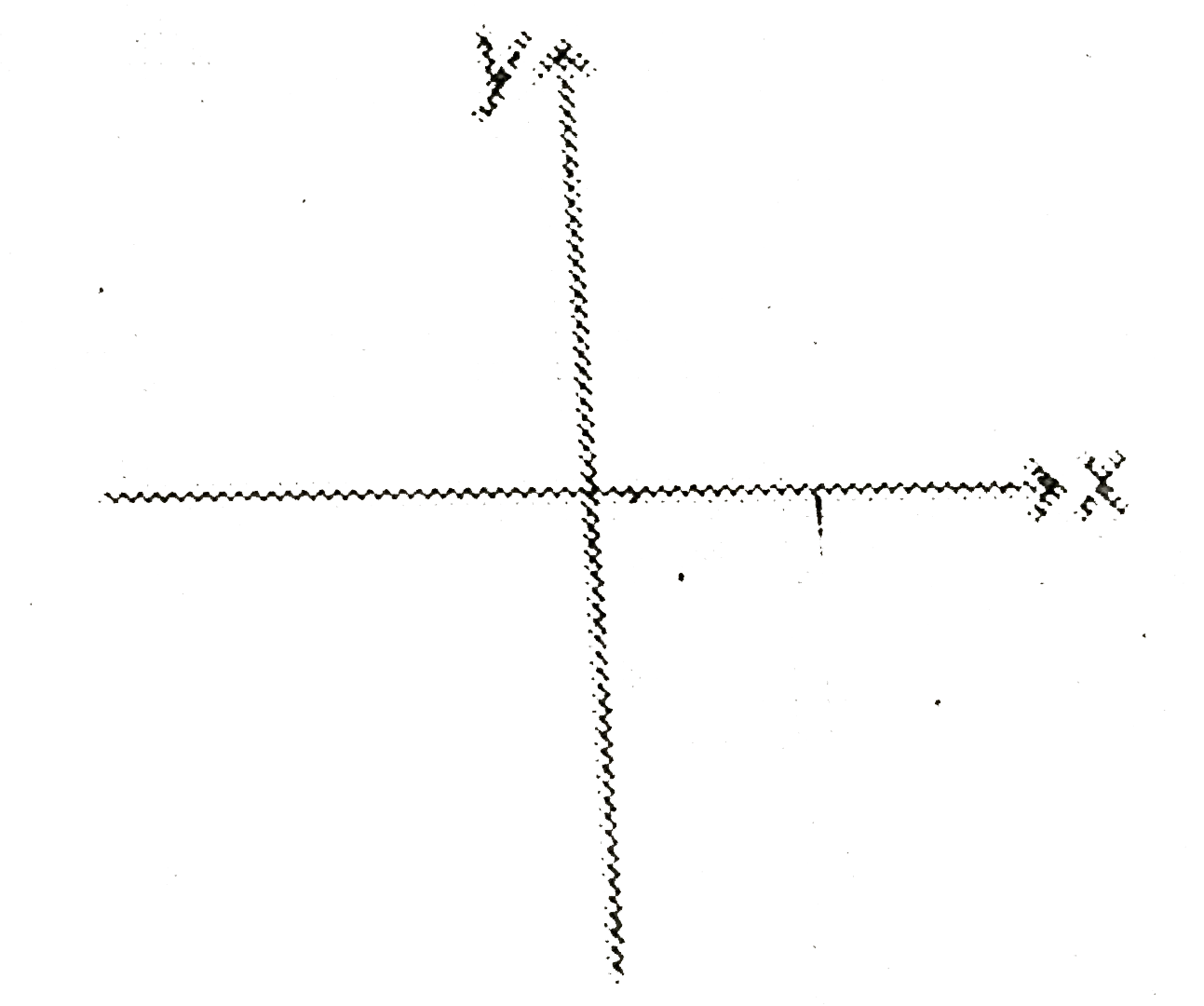x=x1+x2 (where x1=4cosωt and x2=3sinωt) is the equation of motion of a particle along x-axis. The phase different between x1 and x is
37∘
53∘
90∘
none of these
The correct Answer is:A
To find the phase difference between x1 and x in the equation x=x1+x2, where x1=4cos(ωt) and x2=3sin(ωt), we can follow these steps:
Step 1: Write the equation of motion
We have:
x=x1+x2=4cos(ωt)+3sin(ωt)
Step 2: Use the sine addition formula
We can express x in the form of a single sine function using the sine addition formula:
x=Asin(ωt+ϕ)
where A is the amplitude and ϕ is the phase angle.
Step 3: Identify coefficients
From the equation x=4cos(ωt)+3sin(ωt), we can identify:
- Coefficient of cos(ωt): 4
- Coefficient of sin(ωt): 3
Step 4: Calculate the amplitude A
The amplitude A can be calculated using the formula:
A=√(42+32)=√16+9=√25=5
Step 5: Calculate the phase angle ϕ
The phase angle ϕ can be found using:
tan(ϕ)=Coefficient of sin(ωt)Coefficient of cos(ωt)=34
Thus,
ϕ=tan−1(34)
Step 6: Find the phase difference between x1 and x
We know that:
- x1=4cos(ωt)=4sin(ωt+π2)
- The phase of x1 is π2 (or 90 degrees).
Now, the phase difference Δθ between x1 and x is given by:
Δθ=Phase of x1−Phase of x=π2−ϕ
Step 7: Substitute ϕ
Substituting ϕ:
Δθ=90∘−tan−1(34)
Step 8: Calculate the numerical value
Using a calculator:
tan−1(34)≈36.87∘
Thus,
Δθ≈90∘−36.87∘≈53.13∘
Final Answer
The phase difference between x1 and x is approximately 53∘.
---
We have:
x=x1+x2=4cos(ωt)+3sin(ωt)
We can express x in the form of a single sine function using the sine addition formula:
x=Asin(ωt+ϕ)
where A is the amplitude and ϕ is the phase angle.
From the equation x=4cos(ωt)+3sin(ωt), we can identify:
- Coefficient of cos(ωt): 4
- Coefficient of sin(ωt): 3
The amplitude A can be calculated using the formula:
A=√(42+32)=√16+9=√25=5
The phase angle ϕ can be found using:
tan(ϕ)=Coefficient of sin(ωt)Coefficient of cos(ωt)=34
Thus,
ϕ=tan−1(34)
We know that:
- x1=4cos(ωt)=4sin(ωt+π2)
- The phase of x1 is π2 (or 90 degrees).
Δθ=Phase of x1−Phase of x=π2−ϕ
Substituting ϕ:
Δθ=90∘−tan−1(34)
Using a calculator:
tan−1(34)≈36.87∘
Thus,
Δθ≈90∘−36.87∘≈53.13∘
The phase difference between x1 and x is approximately 53∘.
Topper's Solved these Questions
- SOUND WAVESBook:RESONANCE ENGLISHChapter:SOUND WAVESExercise:Solved Examples
Explore 24 Videos
- SOUND WAVESBook:RESONANCE ENGLISHChapter:SOUND WAVESExercise:Board Level Exercise
Explore 33 Videos
- SIMPLE HARMONIC MOTIONBook:RESONANCE ENGLISHChapter:SIMPLE HARMONIC MOTIONExercise:Exercise
Explore 28 Videos
- STRING WAVESBook:RESONANCE ENGLISHChapter:STRING WAVESExercise:Exercise
Explore 32 Videos
Similar Questions
Knowledge Check
if x=asin(ωt+π/6) and x'=acosω, t, then what is the phase difference between the two waves
Aπ/3Bπ/6Cπ/2Dπ
Two waves are represented by the equations
y1=asin(ωt+kx+0.785)
and y2=acos(ωt+kx)
where, x is in meter and t in second
The phase difference between them and resultant amplitude due to their superposition are
View Solutionx1=3sinωt,x2=4cosωt
Find (i) amplitude of resultant SHM, (ii) equation of the resultant SHM.
View SolutionEquations of a stationary and a travelling waves are as follows y1=sinkxcosωt and y2=asin(ωt−kx). The phase difference between two points x1=π/3k and x2=3π/2kisϕ1 in the standing wave (y1) and is ϕ2 in the travelling wave (y2) then ratio ϕ1/ϕ2 is
View SolutionA xandy co-ordinates of a particle are x=Asin(ωt)andy=Asin(ωt+π/2). Then, the motion of the particle is

View Solutionx1=3sinωt⇒x2=4cosωt. Find (i) amplitude of resultant SHm, (ii) equation of the resultant SHm.
View Solutionx1=3sinωt , x2=4cosωt. Find (i) amplitude of resultant SHM, (ii) equation of the resultant SHM.
View SolutionTwo SHM are represented by equations x1=4sin(ωt+37°) and x2=5cos(ωt). The phase difference between them is
View Solution
